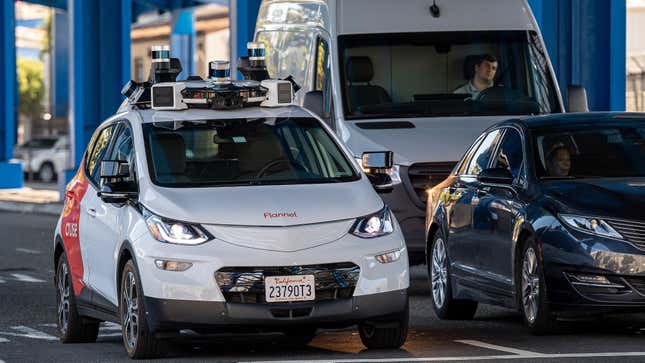
The public’s trust in self-driving cars has declined for the second year in a row, according to a study conducted by J.D. Power and MIT. The growing distrust applies to self-driving cars in general, including autonomous vehicles used by ride-hailing services, as well as autonomous driving systems such as Tesla’s “Autopilot,” which belies its limited capabilities through a misleading name.
It’s these kinds of deceptive practices that seem to be turning public opinion against AVs, but the frequent robotaxi crashes aren’t helping, either. The 2023 Mobility Confidence Index Study puts consumer confidence in AVs at 37 (on a 100-point scale), which represents a decline of two points from last year when confidence was at 39 out of 100. And before that, in 2021, consumer confidence was at 42 out of 100. The results indicate trust in self-driving cars is going down steadily, and it keeps moving in a direction that bodes badly for AVs and major automakers who are betting big on self-driving cars.
The joint J.D. Power and MIT study claims that there are bright spots in the study, which found that first-time riders in robotaxis generally report positive attitudes towards AVs, but this is counteracted by negative media coverage of the “endless deployment issues” that autonomous vehicles are undergoing. And this, in turn, is contributing to the decline in trust. Per J.D. Power:
“Consumer trust is fragile, but it is the foundation upon which long-term AV acceptance is built,” said Lisa Boor, senior manager of auto benchmarking and mobility development at J.D. Power. “This first-time feedback from robotaxi riders shows significant growth in consumer comfort levels across any AV application. Industry stakeholders must seize the opportunity to build confidence and promote the technology across all transportation modalities through these first-hand experiences but, for success, it cannot be overshadowed by endless deployment issues.”
But the so-called “negative news cycle” isn’t causing AV crashes in the first place. Media coverage — be it good or bad — comes after the fact, and self-driving cars are crashing and killing people independent of news reporting.
The AV crashes and their frequency have risen to a level that’s prompted legislators and regulatory agencies to get involved. Again, lawmakers and federal agencies are reacting to the problems that self-driving cars now pose rather than preempting these, which is arguably a better approach.
The auto industry sped ahead of regulatory bodies in the U.S., hoping for the best as it deployed autonomous vehicles and investors followed suit. This seems optimistic at best and plain reckless at worst. Researchers at MIT say it may be time to stop and reevaluate the issues, as Auto News reports:
Bryan Reimer, research scientist at MIT’s Center for Transportation and Logistics and a founder of the Advanced Vehicle Technology Consortium, suggests those may be secondary effects derived from concerns with the core technology itself.
“If we want to fix the trust problem, maybe we want to fix the foundations of why the technology appears in the news all the time,” he told Automotive News. “I understand why everyone wants to be full speed ahead, but perhaps it’s time to take a pause and reboot, and not keep making the same mistakes.”
Finally, there’s a general lack of knowledge about AVs that traces back, in part, to how the industry is marketing autonomous vehicles and their operation. A self-driving car is not self-driving. Not really. So why do we call it that? I guess it’s because Tesla thought “Autopilot” and “Full Self-Driving” sounded cool.
The problem is that thanks to the misnomer, 22 percent of study respondents believe that Tesla EVs are capable of fully automated operation. They are not. Until the general public can easily tell between lower levels of automation, it’s not a good idea to tout any AV system as “Full Self-Driving.” It certainly hasn’t done these early (proto) robocars any favors to misrepresent their capabilities.
